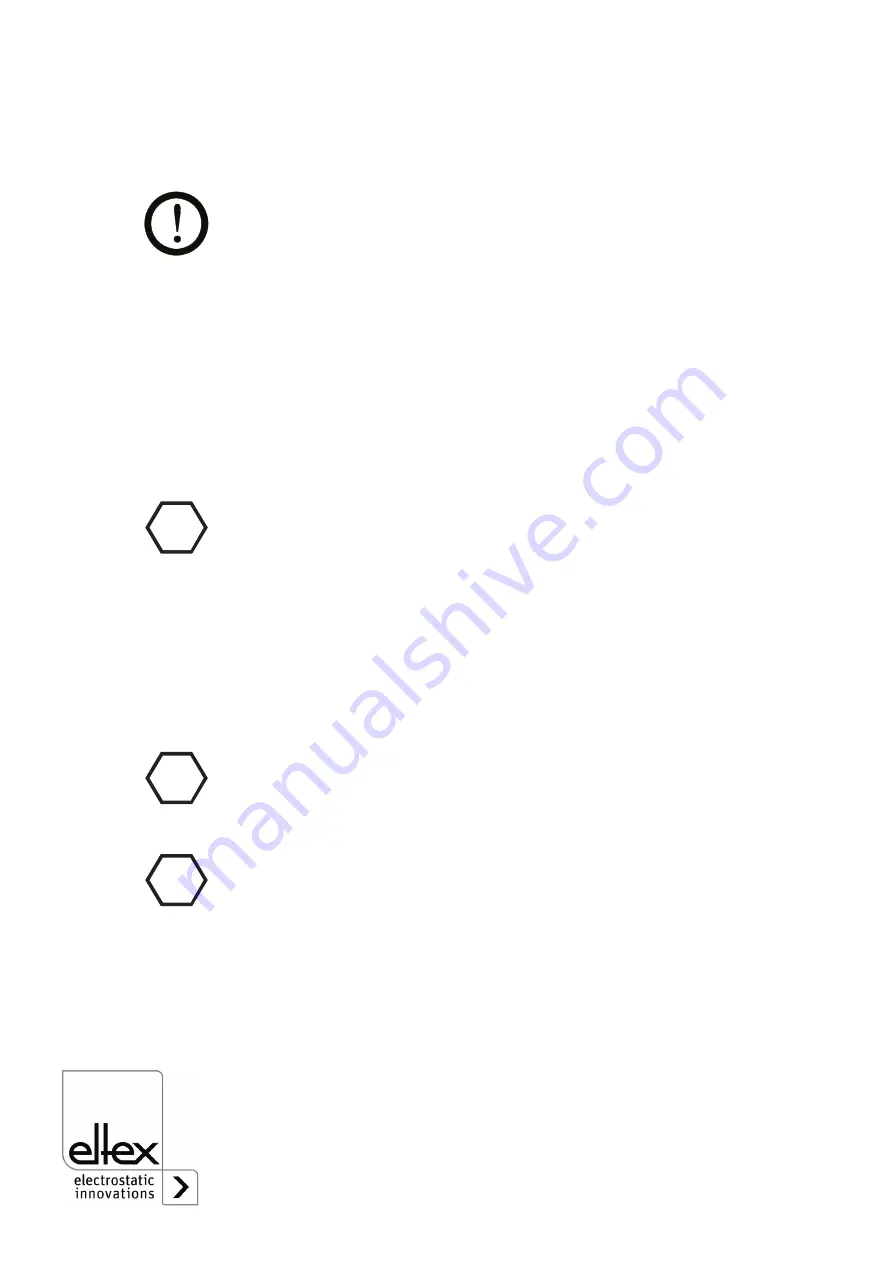
14
BA-en-4003-2005_TUE30
circuits are intrinsically safe. The non-intrinsically safe terminals for the
supply voltage and the signal contacts are located on the right (see
Fig. 4 / Fig. 5).
The connecting leads inside the connection space must be routed such
that intrinsically safe and non-intrinsically safe leads do not make contact
even if a wire should come loose. Use cable ties, if necessary.
The cable screw connections are designed for external cable diameters of
6…12 mm.
The connecting lead of the clamp is routed in via the cable screw
connection with kink guard (1, Fig. 4 / Fig. 5). Appliances for BIG-BAG
grounding have two contactors, and the second lead is routed in via an
additional cable screw connection with kink guard (3, Fig. 5).
A two-core cable for connecting the ground circuit with the PAL bonding
lead is routed into the connecting terminal space via the cable inlet
(2, Fig. 4 / Fig. 5). The double routing ensures that any disruptions to the
PAL bonding lead are identified.
Note:
The two PAL leads belong to the intrinsically safe circuit, see cable entry
2, Fig. 4 / Fig. 5. The terminals of the Terrabox TCB030 are also marked
as intrinsically safe terminals (blue).
This is
NO
protective ground link, the leads must
NOT
be coloured green/
yellow. The PAL connection can be made with a two-wire sheathed cable,
with no wire colours prescribed, i.e., all colours apart from green/yellow
are permitted.
The sheathed cable can be made in light blue. As the connecting
terminals are already marked in blue, there is no absolute necessity for
this.
A potential equalization system (PA) has to be set up along the complete
measuring circuit.
The signal leads are routed via the cable inlets (4 and 5, Fig. 4 / Fig. 5),
the supply voltage lead is routed in via the cable inlet (6, Fig. 4 / Fig. 5).
The maximum cable length in the intrinsically safe circuit must not exceed
the maximum rated capacity and inductance (see Technical
Specifications).
The device must always be connected to an equipotential bond.
In the ex factory state, the lead-ins (2, 4 and 5, Fig. 4 / Fig. 5) are sealed.
Lead-ins not used must be blanked off.
Close the enclosure after completing the connections, making sure that
the seals are seated properly. Do not damage the seals.
Ex!
Ex!
Ex!















































